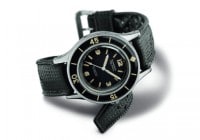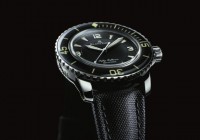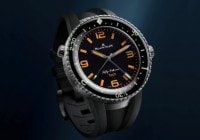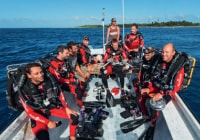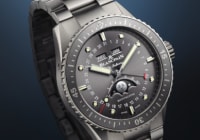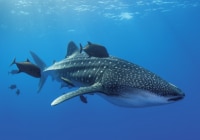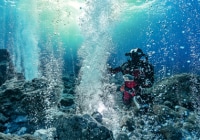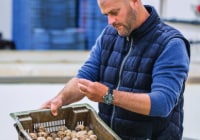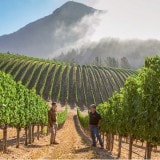
Search in Issues
Chapters
List of parts
Chapter 12
TAHITI Wine
A bold adventure: bringing winemaking to French Polynesia.
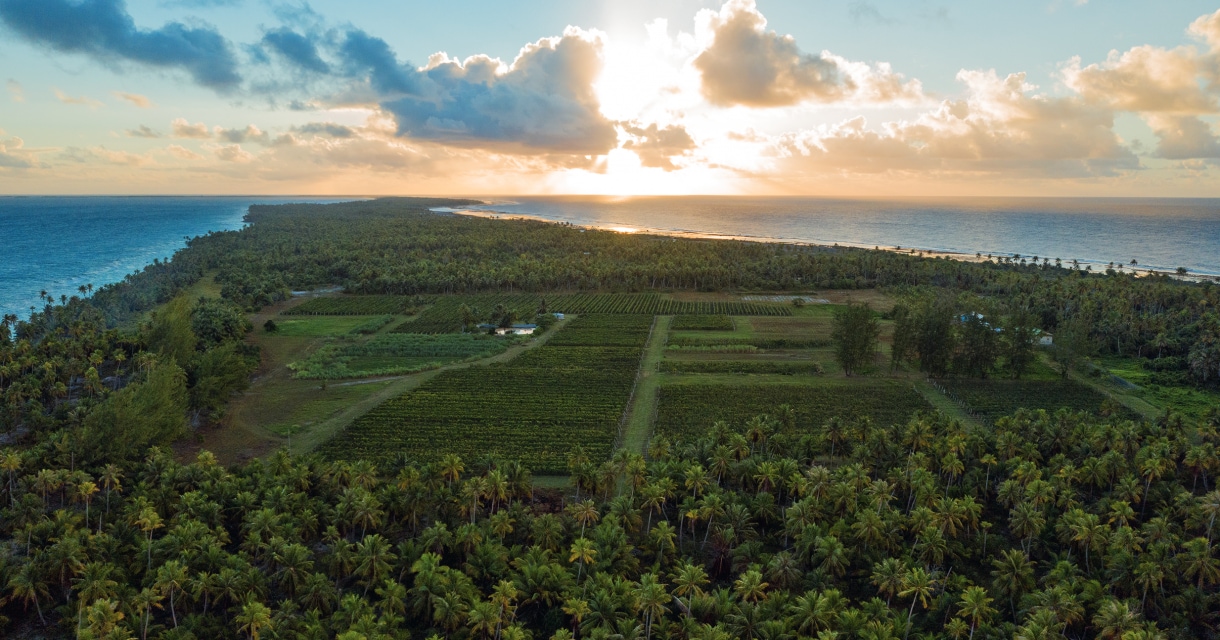
There were MORE THAN 100 TRIALS before a location on Rangiroa was found and grape varietals were chosen.
If you entertain the fantasy of becoming an entrepreneur, you will confront two fundamentally opposite paths: on the one hand, the tried and true, and, its polar opposite, the outlandish, mad adventure. This dichotomy can apply as much to winemaking as it may to Silicon Valley. For example, if your dream is to found a winery in Burgundy, several hundred years of winemaking history will have defined with millimetric precision the merits of each plot of ground and determined the choice of grape. Tried and true, indeed. On the other hand, if your imagination takes you to French Polynesia, you will be decidedly on your own. Some might brand you as a slightly deranged pioneer, wandering without a compass in utterly uncharted territory. Nothing in this vast archipelago, with its atolls scattered over an ocean surface area approximating in size the entirety of Western Europe, has ever witnessed winemaking. For that matter, your search of the terrain will yield nothing that even distantly presents itself in the guise of any other vineyard in the world. The “where” unknown; the grape equally obscure. Yet, the latter was the daunting course charted by Dominique Auroy, a French engineer and entrepreneur, when he brought a selection of vines from Italy and France to Polynesia.
Auroy was no stranger to grand projects, having built dams and constructed an electric grid. That said, the naissance of his wine project brought unknowns and obstacles into sharp focus. Beginning in 1992 was a series of over 100 (!) different trials with a dizzying assortment of varietals planted throughout an equally diverse number of potential sites scattered among the Polynesian atolls. Not for the fainthearted, these experimental plantings were not given to yielding immediate results; except, of course, in those cases of immediate failure. The seemingly obvious choice— planting upon the slopes of the mountains on Tahiti itself, a hillside formula that has prospered elsewhere, with examples including the Rhône (Côte Rôtie), Italy (Terre Nere on Mount Etna), Napa (Howell Mountain)—did not succeed, as the combination of slope and equatorial location offered heat but insufficient hours of sunshine for the grapes to thrive. Years were devoted to the project before Auroy’s patience was rewarded in finding today’s site, located on one of the northwestern islands of the multi-island atoll of Rangiroa. Even then, the initial 1997 planting was modest in size, a mere three hectares.
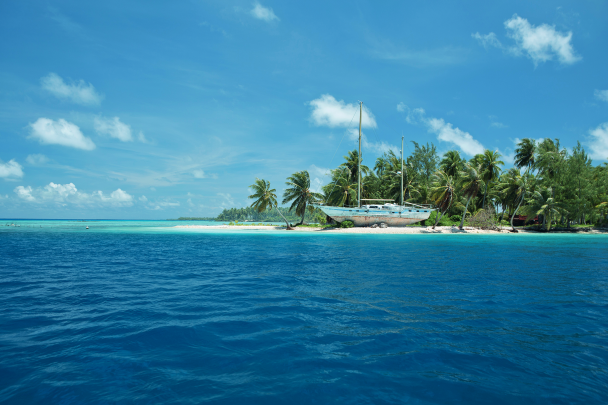
Approaching the vineyard from the Avatoru Pass.
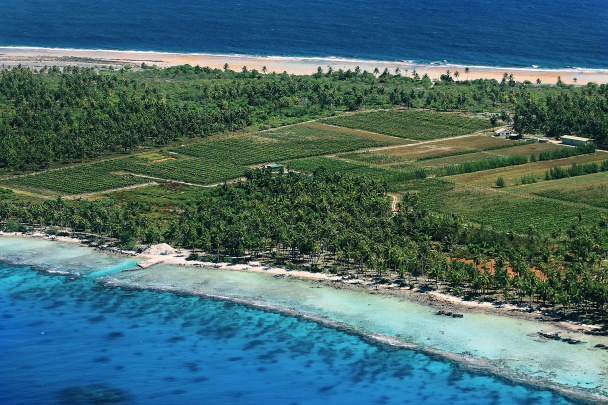
Aerial view of the vineyard.
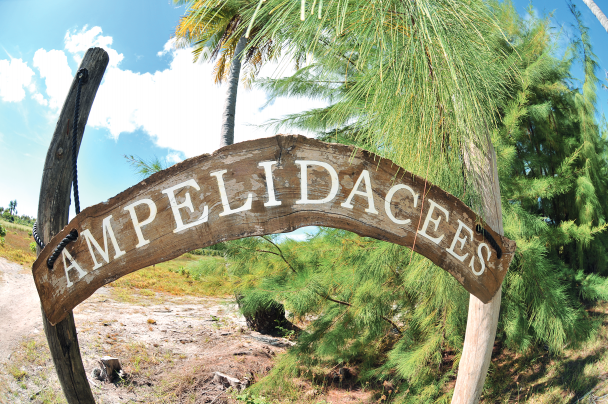
The principal varietal selected was Carignan Rouge. In many respects, this was itself an anomalous choice considering that producing a white wine was the initial goal. Not that Carignan Rouge is a rare varietal. Indeed, for many years, Carignan Rouge was the most common wine grape in France, and was also widely found in Italy and Spain. It is prized for its heartiness, tolerance of heat, and, most of all, abundant yields (up to four times that of Cabernet Sauvignon, the core varietal of the Médoc in Bordeaux). Notwithstanding its widespread adoption, nowhere in the world was Carignan Rouge used to make white wine. Oenologists may be quick to pounce: if the plan was to make white wine, why not use Carignan Blanc? Trials with the blanc version showed that the leaves were too fragile and the plant not vigorous enough to grow in the local climate. Almost everywhere in France, the root stock for the vines is American. This is because of the ravages of phylloxera to which American root stock was found to be resistant, in contrast with the vulnerable French stock. As the phylloxera pest is nowhere present in Polynesia, Auroy’s plantings used the original stock.
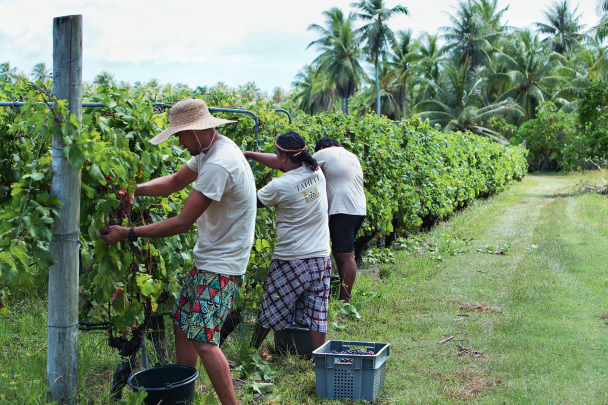
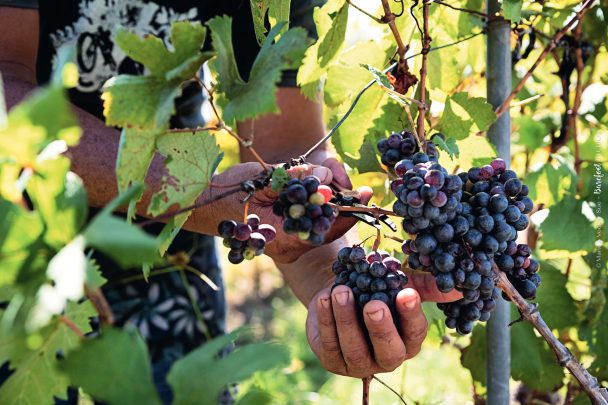
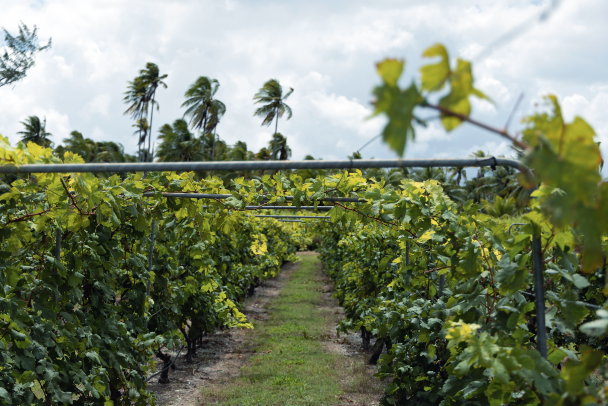
The principal varietal, Carignan Rouge.
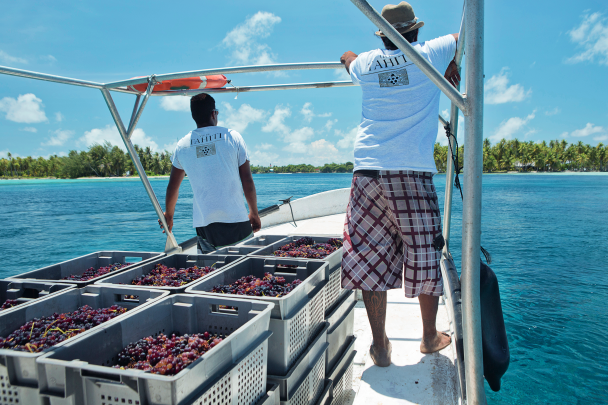
The selection of the site and the principal varietal was only the beginning of the travails to bring winemaking to French Polynesia. In the early days, as rain is not plentiful during several weeks a year, irrigation was done by hand using buckets. Harvesting produced another challenge almost certainly unequaled anywhere else in the world. Access to the vineyard is only possible by boat. The harvest, done by hand, must be placed into a container, resembling a large bathtub, holding, by winemaking standards, a small quantity of clusters. The container is then carried on foot to a small dock, loaded onto a boat capable of accommodating but one container at a time, and ferried to the cuverie located in a different segment of the Rangiroa atoll. These two atoll segments are separated by a deep channel that connects the ocean to what appears, as well, to be open ocean, but which in fact technically is a lagoon, as it is protected by a very narrow coral atoll located over 30 km distant to the south. This labor-intensive ferrying process is then repeated, one container at a time.
However well trained a winemaker may be in confronting the hazards to the vines, there are no chapters in the standard curriculum offering teachings for Rangiroa. Take, for example, crabs. Freely traveling via the water table underlying the vineyard, crabs dig their way upwards to attack the vines. Then there are the wild pigs that inhabit the atoll. More dramatic still are the storms. Even though the vineyard is on the interior of the atoll, surrounded by walls of coconut palms, the separation from the seas on both sides is but a short walk. Although fortunately not a frequent occurrence, high winds have been seen to generate waves as high as 7 meters, propelling saltwater spray into the vineyard.
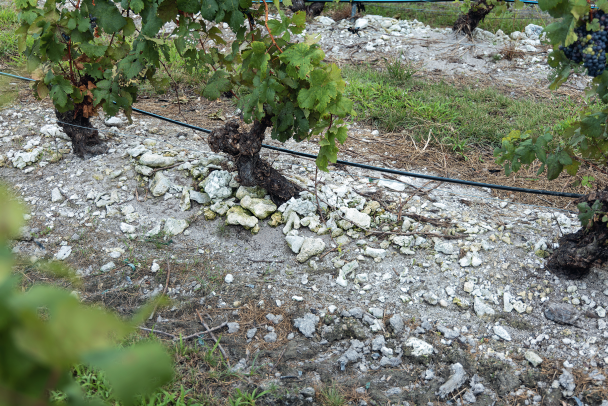
The coral soil that brings distinctive minerality to the wines.
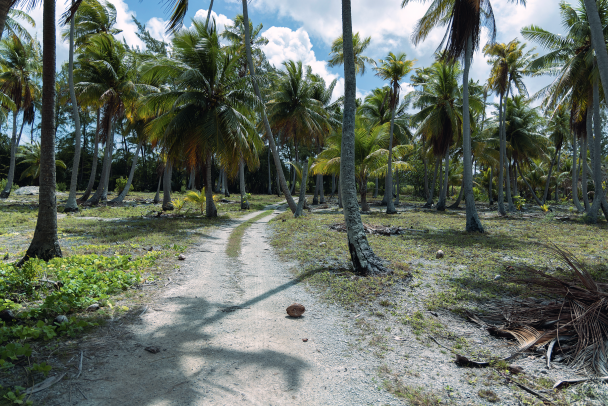
Contrast the grand esplanades found in Bordeaux with the entry path in Rangiroa.
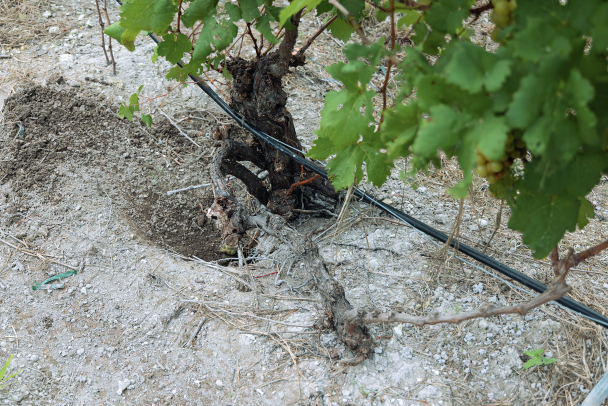
Evidence of a crab attack in the vineyard.
Discovered, however, was one bright spot. Thanks to its equatorial location, Rangiroa does not experience a real winter. As a result, unlike all the principal wine-growing regions in the world, the vines never enter a winter dormant period. Once harvested and pruned, the vines re-start a growth phase leading to a second harvest in the same year. Try putting that on the vintage charts. Is a particular bottle from a given year from harvest I in May or harvest II in December?
The winemaking is now under the leadership of Sébastien Thépénier, Burgundian by birth who arrived in 2002 from Alsace. Sébastien has overseen multi-dimensional growth of the Rangiroa vineyard, indeed to the extent that it is now home to more than vines. The original planting of Carignan Rouge remains the dominant wine varietal, but subparcels now include Italia, a white Italian grape, and Muscat. There is more, however, to introducing a varietal to the vineyard than inserting it into the ground. There is a process of adaptation. Once a varietal is planted, Sébastien evaluates which particular vines of that varietal succeed better than others. Those then are cloned and used for wider planting. Survival of the fittest in the finest Darwinian tradition. That is precisely what is occurring now. A trial is currently underway with Chasselas, the favored white grape in Switzerland’s Lavaux. At this early stage, the Chasselas vines are in a struggle to survive the attacks of local insects, so although the grapes are of fine quality, the quantities are miniscule and the plants themselves feeble. The hope from the trial is that some examples of the Chasselas will adapt and show themselves to be hardier and suitable for wider planting. In spite of the current Chasselas battles with its new environment, Sébastien is cautiously optimistic, recalling that ten years were devoted to a similar selection process for the Carignan Rouge.
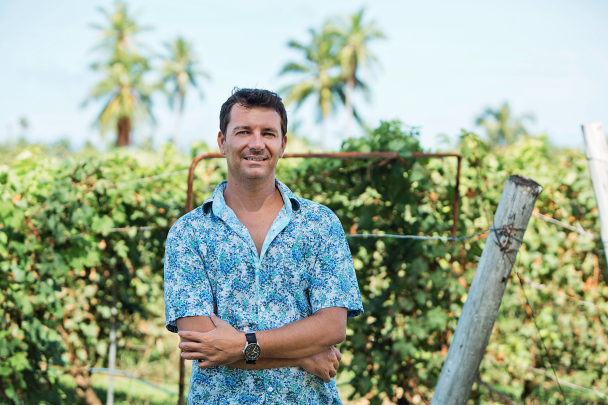
Sébastien Thépénier.
Portions of the list of BIODYNAMIC MEASURES have been introduced in the vineyard.
Progress is occurring on many fronts. From a production of just 400 bottles a year after Sébastien arrived, quantities have now crested 30,000. Irrigation by hand-carried buckets has now been replaced by a drip system, with water supplied by solar-powered pumps. Beginning in 2016, he began a trial of several biodynamic methods. Spurning the more exotic and controversial elements of the biodynamic bible, such as the burying of a cow’s horn filled with manure, Sébastien has settled upon the more moderate measures of compost and the moon. Confectioning a natural compost from the vine cuttings and seaweed comprises a large part of the effort and would seem obvious, particularly as it augments the large presence of coral in the soil. Perhaps, at first blush, less evident is scheduling activities in the vineyard according to phases of the moon. A moment of reflection reveals the logic. More than any other vineyard on earth, this Rangiroa parcel is influenced by its marine surroundings, which, in turn, are highly linked to the moon phase.
Pointing in an entirely different direction is the growing of sugar cane for rum. Rangiroa’s rum history has been obscured by subsequent events. French explorer Bougainville discovered what is now known as “Bourbon cane” sugar cane growing in Polynesia in the late 1700s. Renaming it “O Tahiti Cane”, he transported it to Mauritius. From there, its plantings spread initially to the West Indies and Guyana and then onward to many parts of the world. Hybridization followed to produce more profitable and resistant varieties. Sadly, the original native Bourbon cane came to be largely forgotten, even in Polynesia, in favor of the more modern varieties. The team now leading the rum effort has re-introduced the native Bourbon sugar cane with its distinctive, red-colored stock, planting it adjacent to the vines, and bringing a significant measure of authenticity to the rum project. The cane that is grown is fermented in Rangiroa and then transported to Tahiti where Sébastien’s colleague, Maxime Taupo, undertakes the distillation to produce a range of rum under the name Mana’o.
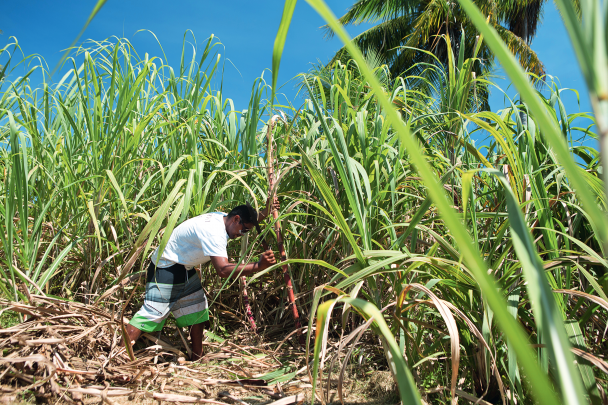
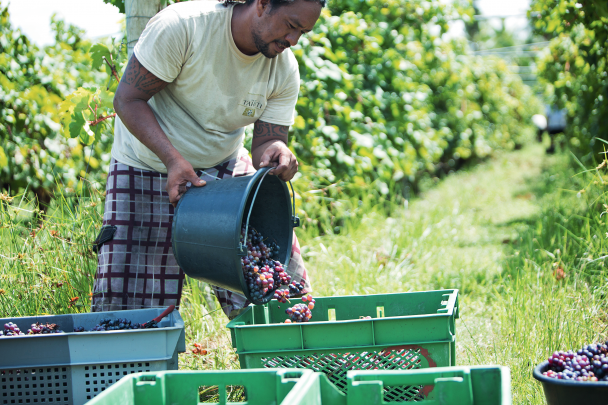
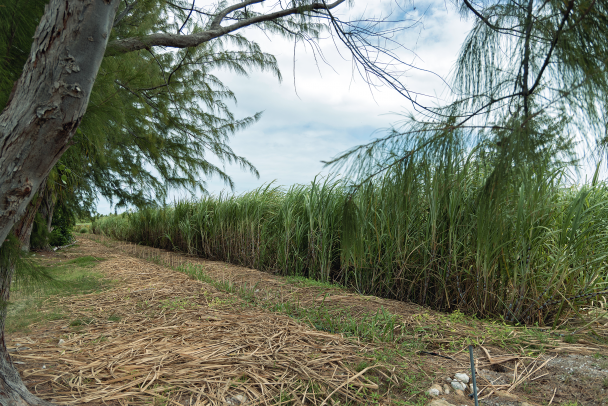
Sugar cane plantings that surround the vineyard.
A testament to the dedication and skill of Dominique Auroy and Sébastien Thépénier is the HIGH QUALITY and DISTINCTION of these Tahitian wines.
The main focus of Sébastien’s efforts is, of course, wine. Although he has produced some very small quantities of red Carignan in the past, the present offerings consist of three white cuvées and one rosé. At the top of the range is the Clos du Récif. This is 100% Carignan Rouge harvested from the oldest sections of the vineyard and includes a substantial percentage aged in oak barrels, the remainder in terracotta “barrels”. To make white wine from a red wine grape demands careful technique, gently letting the juice run free without firm pressing of the skins, where the red color and tannins reside. The second white, Clos du Corail, is a blend of Carignan Rouge, Italia, and a very small percentage of Muscat. The third white is a late harvest cuvée, named Monamona. It is a blend of 55% Italia, 40% Carignan Rouge, and 5% Muscat. Nacarat is the rosé, which is almost entirely Carignan Rouge with but a small percentage of Italia. The difference in the method in handling the Carignan between this rosé and the whites is the length of time on the skins and the degree of pressing so as to allow the skins to transfer some, but far from all, of their color and character to the juice.
What Dominique Auroy and Sébastien Thépénier have achieved is remarkable. Seeing these offerings on wine cards in Tahiti or France—the only places they are found—may lead some to be immediately dismissive. “Yes, it’s wine. And in a bottle, no less. But surely no more than that.” In fact, these are distinctive and of very high quality. So much so that during yours truly’s several days’ sejour in Polynesia, they were the only wines selected to accompany every meal.
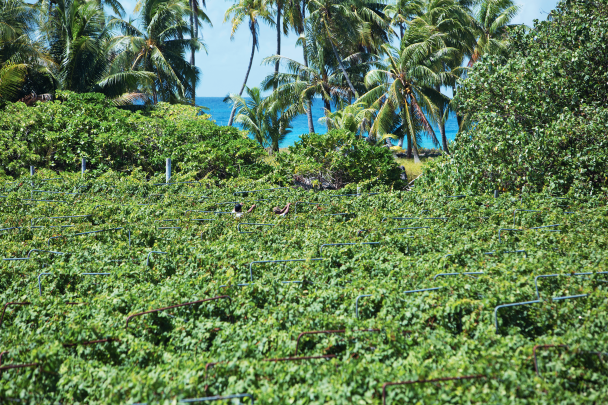

TASTING Notes
All wines tasted by Jeffrey S. Kingston at the domaine and elsewhere in Rangiroa in September 2022.
2021 CLOS DU RÉCIF
Flint and iron in the nose recalling the coral soil. The mouth is full, round with good depth. Lime, minerals, and vanilla flavors all presented with excellent focus. Long citrus finish.
2021 BLANC DU CORAIL
Mineral nose followed by citrus leading to a grapefruit finish. Not as rich as the Clos du Récif, but perfectly focused and balanced.
2021 ROSÉ NACARAT
Slightly deeper color than classic rosés from Provence. Citrus nose gives way to blood orange mineral body, leading to citrus finish. There is impressive depth of flavor and body. Tasted side by side with a Provençal rosé on Tahiti, the Nacarat outperformed in all dimensions.
2021 MONAMONA
Lighter and easier to drink than most late harvest wines. Round in the mouth with bright acids, apricots, and pêche de vigne. Sweet balanced finish. Will marry well with food.
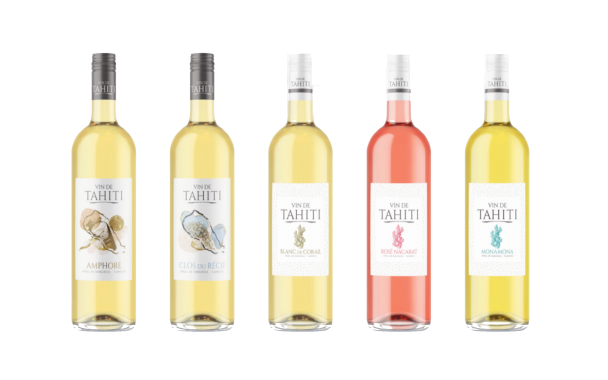
|
PUBLISHER EDITORIAL COMMITTEE PROJECT MANAGEMENT EDITORS IN CHIEF CONTRIBUTORS TO THIS ISSUE TRANSLATION PROOFREADING |
GRAPHIC DESIGN. LAYOUT ART DIRECTION PHOTOLITHOGRAPHY WATCH PHOTOGRAPHY OTHER PHOTOGRAPHY, ILLUSTRATIONS Release date: January 2023 |
Other issues
Don't miss the latest issue
Sign Up for New Releases

